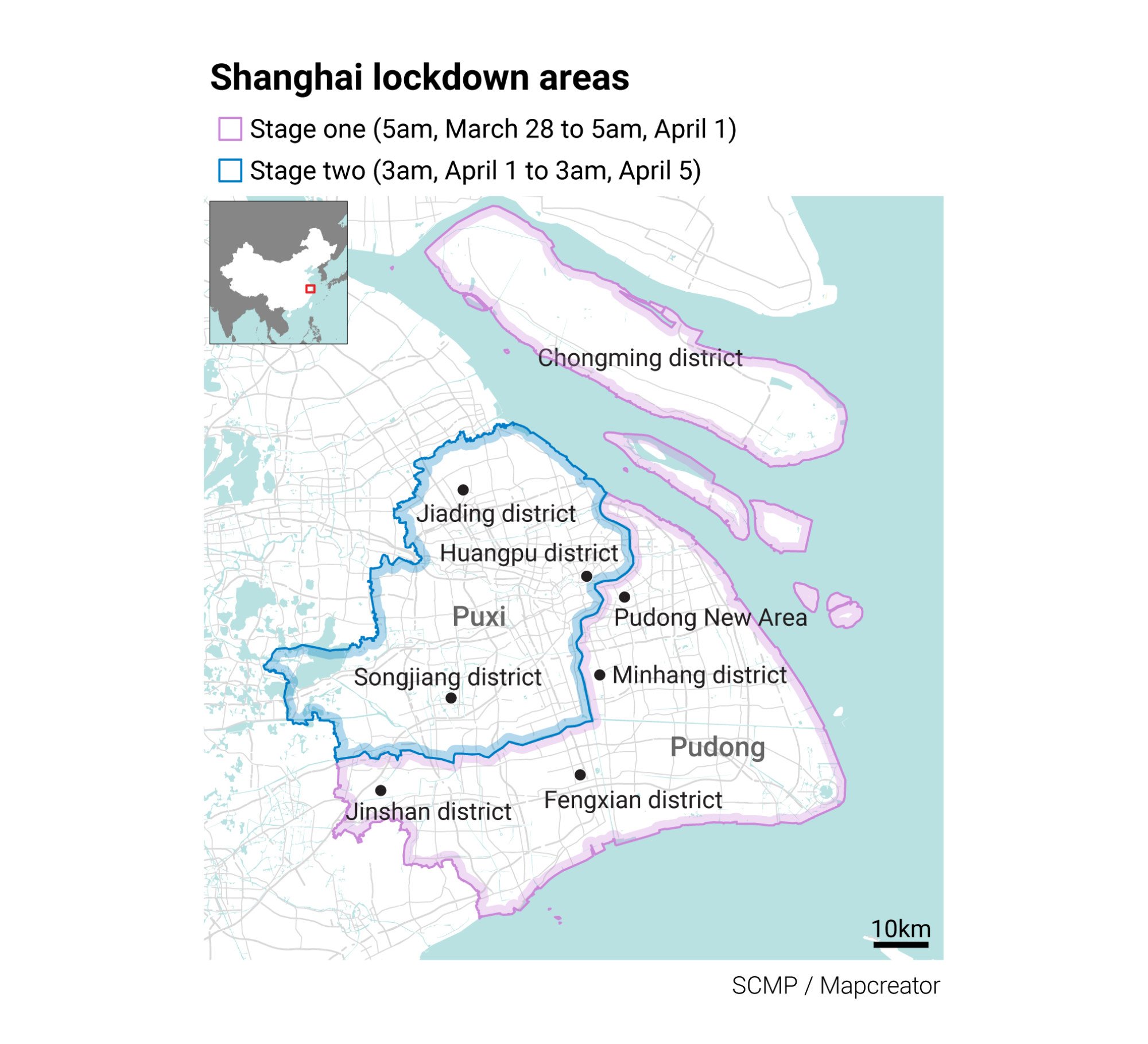
Omicron: Shanghai lockdown needed to stop ‘serious’ community spread, experts say
- Financial hub has been split in half as authorities try to contain worst outbreak
- Arrangement seen as ‘good way to avoid the city coming to a complete standstill’
Shanghai reported 3,500 new locally transmitted cases on Monday, most of them with mild or no symptoms. More than 10,000 infections have been found through mass testing in the past week – over 9,900 of them asymptomatic.
Lu Hongzhou, an infectious disease specialist who was previously based in Shanghai and now heads Shenzhen’s medical expert team on pandemic control, said the virus had spread widely in Shanghai and it was affecting people’s lives and creating a burden on the health system.
He said mass testing was necessary to identify asymptomatic infections and cut the transmission chains by isolating cases.
“If [the outbreak] drags on longer, its impact on Shanghai’s economy will be even greater,” Lu said.
The city of nearly 25 million people had until this month been held up as a model for others, with just 400 cases and seven deaths since the pandemic began. More than 95 per cent of residents have been fully vaccinated.
According to Lu, the arrangement is a “good way to avoid the city coming to a complete standstill” and limit the impact of the lockdown and testing blitz. “Half of the city will go into mass testing while it will be business as usual in the other half,” Lu said.

Chen Erzhen, vice-president of Shanghai Jiao Tong University’s Ruijin Hospital, said the less virulent Omicron variant meant there was a high proportion of asymptomatic cases and a lot of people were unaware they had been infected.
“Patients have been infected in many different places, showing that the community transmission in households, companies and factories is very serious now,” he told online news site Shanghai Observer.
Chen, who oversees a temporary isolation and treatment facility at the World Expo Exhibition and Convention Centre, said the lockdown would curb community transmission of the virus.
“When case numbers reach a certain level, relying on the previous approach of contact tracing [to control the spread] becomes difficult,” he was quoted as saying.
Woman has double eyelid surgery sutures removed at gate during lockdown
Hong Kong-based infectious disease expert Leung Chi-chiu said the lockdown and mass testing would aim to find areas with cases, and if so he expected more targeted controls to be imposed.
He said that was the approach of Shenzhen, which – after a citywide lockdown ended last week – kept restrictions in areas where infections were found.
“After testing, places with no cases can relax their controls,” he said. “Areas with cases might continue to be locked down for one to two incubation periods of the virus, which last seven to 10 days. These areas will be able to lift restrictions when they get back to zero cases.”
Additional reporting by Mandy Zuo and Phoebe Zhang

